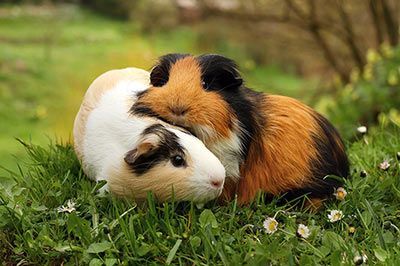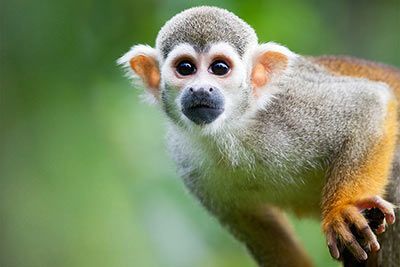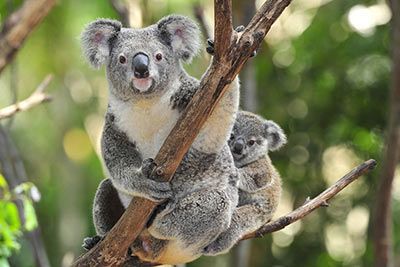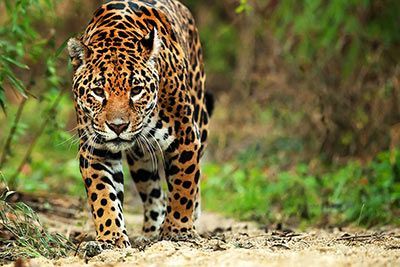Giant Panda
Giant Panda Facts
| Size | 4-5 ft (120-150 cm) (body); 24-35 in (60-90 cm) (shoulder height) |
| Speed | Up to 20 mph (32 km/h) (short distances) |
| Weight | 154-352 lb (70-160 kg) |
| Lifespan | 14-20 years |
| Food | Bamboo |
| Predators | Leopards, Birds of prey |
| Habitat | China |
| Order | Carnivore |
| Family | Bears |
| Scientific name | Ailuropoda melanoleuca |
| Characteristics | Bamboo makes up 99% of the panda’s food |
Main Characteristics
Giant pandas are large, black and white colored bears that feed on bamboo. They live in China where they inhabit mainly mountainsides with dense bamboo forests.
A Vegetarian Animal of Prey
Scientifically, Pandas have the anatomy of carnivores and are predators. However, they almost exclusively feed on bamboo. Yet, they also take some tasty fish or a small rodent for a snack in between sometimes.

Anatomy and Appearance
Color
Why does the panda have black and white fur? Scientists are not quite sure. They believe pandas might have developed a black and white fur in order to stand out against the colors of the jungle and to be able to find each other more easily.
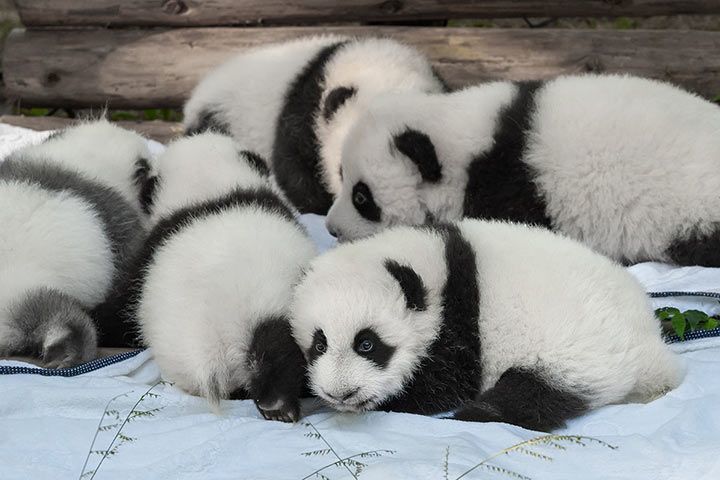
Diet
Huge Panda? Huge Appetite! Giant pandas spend at least twelve hours a day munching away bamboo. They use their sharp teeth and strong jaws to remove the hard bark and then feed on the juicy inside. They eat 22-66 pounds (10-30 kg) which is about 40% of its own body weight! The reason for this is not their love for food:
Bamboo is not very nutritious, and this means that pandas need lots and lots of it. And eating so much is not even worth the trouble. The panda can digest only 20% of the food. 80% are excreted undigested – more than 12 times a day ... stink alarm!
Senses and Abilities
Can They Swim?
You might tink that Giant Pandas are too large and heavy to swim and would rather drown. Don't worry ;) Giant Pandas can swim!
Can They Climb Up Trees?
Yes, they can. Even a few months old panda cubs can already climb very well.
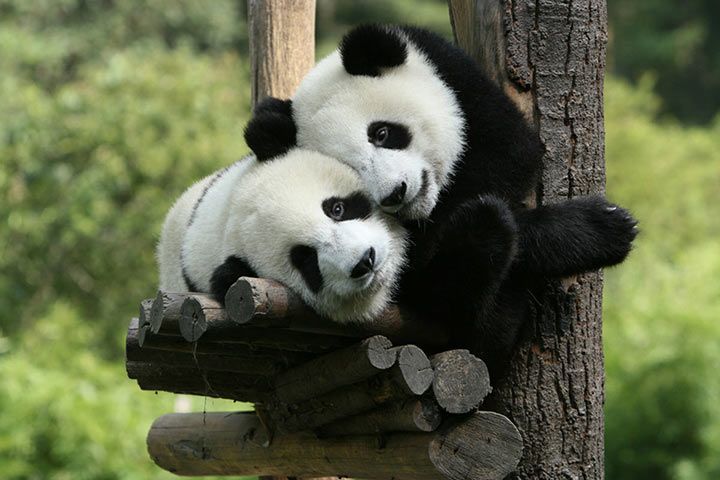
Enemies and Threats
Natural Predators
Its natural predators include snow leopards and eagles. To cubs, martens, red dogs and weasel pose a threat.
No Bamboo, No Panda
The Panda needs lots of bamboo, but it eats only about 25 of 100 species. In general, the panda changes its “restaurant” if there is no more bamboo available and moves on to another region. Unfortunately this is a problem, as humans take over more and more of the panda’s habitat and chop down the bamboo forests.
The panda is right on top of the IUCN Red List of Threatened Species as a vulnerable species (luckily, since 2016 it is not threatened anymore but “only” endangered). The nature conservation organization WWF estimates that there are only about 1,800 pandas left worldwide.
Are They Dangerous?
Giant pandas are considered gentle and peaceful. They avoid fighting and prefer to back off. But if they can not escape, they can become dangerous - for enemies, rivals and for humans.
Reproduction
The birth of a panda is always a extraordinary event, because captive pandas only very rarely give birth. Yet, according to the Guinness Book of Records 2009, 30 (!) pandas were born in 2006, most of them in the Wolong Panda Research Centre, Southwest China.
Fun Facts
They Make Funny Sounds
Pandas seem to quietly munch away at their bamboo. Surprisingly enough, they are not as quiet as you might think. Sometimes you can hear them bleat in a friendly manner or blat like baby goats or lambs. They bark, growl and hiss, too. Baby pandas also quack and squeak.
The Giant Panda Is Related To:
Animals in the Same Biome:
- Asian Black Bear
- Bengal Cat
- Red Panda
- Watch Now on animalfunfacts.net:
 Endangered Animal Species
Endangered Animal Species Animal Eating Habits
Animal Eating Habits














